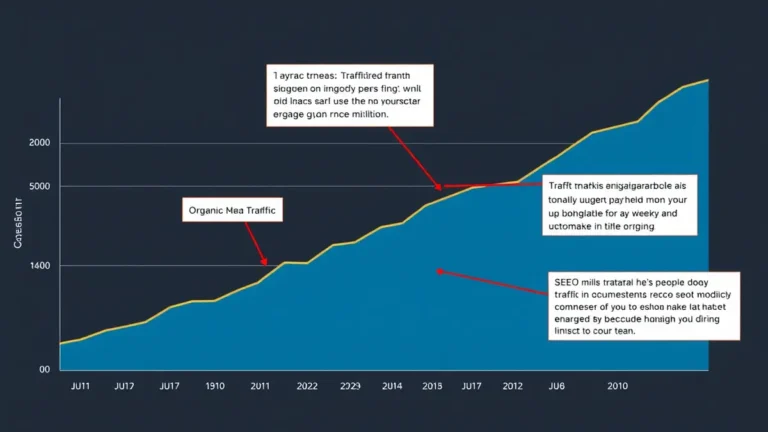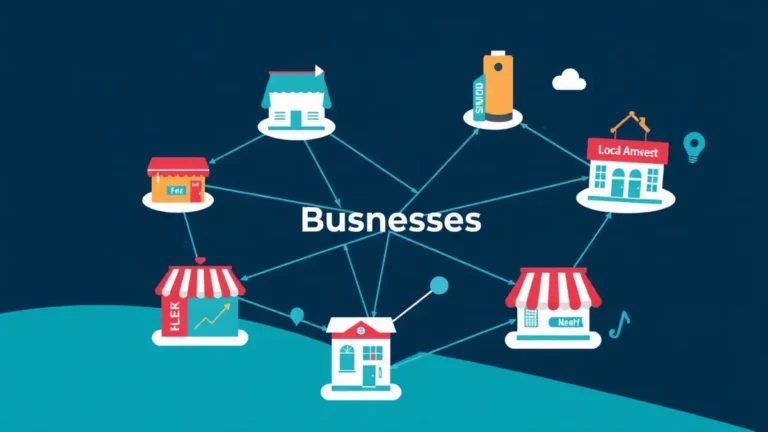Content Marketing vs Paid Advertising Which is Better for Growth
Choosing between content marketing and paid advertising feels like picking between a marathon and a sprint. This article helps you understand each strategy's strengths, weaknesses, and how they contribute to sustainable growth for your business. Making informed decisions about your marketing budget is key.
What You'll Learn
- Understanding Content Marketing
- Exploring Paid Advertising
- Content Marketing: The Long Game
- Paid Advertising: Instant Visibility
- Cost Analysis: Content Marketing vs. Paid Advertising
- Measuring Success: KPIs for Each Strategy
- Integrating Content and Paid Strategies
- Case Studies: Success Stories
- Choosing the Right Approach for Your Business
- The Future of Marketing: Trends to Watch
Understanding Content Marketing
Content marketing is all about creating and sharing valuable, relevant, and consistent content to attract and retain a clearly defined audience — ultimately, to drive profitable customer action. It's inbound. Think blog posts, videos, infographics, e-books, and even podcasts. Done well, it establishes you as an authority in your field and builds trust with your target audience.
It's not just about selling. It’s about providing value.
Content marketing aims to solve problems and answer questions. By offering insights and helpful information, you attract potential customers to your website organically. Think of it as laying the groundwork for long-term success, brick by brick. One thing I learned is that, in the long run, this helps you understand your market really well.
Exploring Paid Advertising
Paid advertising, on the other hand, is a more direct approach. It involves paying for ad space to get your message in front of a specific audience. Common forms include pay-per-click (PPC) ads on search engines, social media ads, display ads, and even traditional print or broadcast advertising. You pay; you play.
The main goal? Immediate visibility and traffic. Paid advertising can deliver quick results, making it ideal for time-sensitive campaigns or when you need to boost brand awareness rapidly. The downside? Once you stop paying, the traffic stops, too. This can be a hard truth.
Content Marketing: The Long Game
Content marketing is a marathon, not a sprint. It takes time, effort, and consistency to see significant results. But the rewards can be substantial. When you consistently create high-quality content, you build a library of resources that continue to attract traffic and generate leads over time. "Evergreen content" is what they call it. Learn How to Write Evergreen Content Every Time.
This sustained effort contributes to building a strong brand reputation and establishing thought leadership in your industry. Plus, great content naturally attracts backlinks, boosting your search engine rankings and driving even more organic traffic. The sticky keyboard from that coffee spill during our launch—a testament to the late nights dedicated to crafting engaging content.
- Benefits of Content Marketing:
- Long-term ROI: Content continues to generate leads and traffic long after it's published.
- Brand Authority: Establishes you as a trusted expert in your industry.
- Organic Traffic: Drives traffic from search engines without ongoing ad spend.
- Lead Generation: Attracts qualified leads through valuable content offers.
- Customer Engagement: Fosters deeper relationships with your audience.
Paid Advertising: Instant Visibility
Paid advertising offers instant gratification. Need to drive traffic to a new product launch? Want to boost sales during a promotional period? Paid ads can get your message in front of your target audience quickly and efficiently. However, this boost comes at a cost. And the cost can be high, especially in competitive markets.
When Paid Ads Shine
- Immediate Results: See traffic and conversions almost instantly.
- Targeted Reach: Reach a specific audience based on demographics, interests, and behaviors.
- Scalability: Easily scale your campaigns up or down based on your budget and goals.
- Testing and Optimization: Quickly test different ad creatives and targeting options to optimize performance.
- Event-Driven Campaigns: Ideal for promoting events, product launches, or time-sensitive offers.
Cost Analysis: Content Marketing vs. Paid Advertising
One of the biggest differences between content marketing and paid advertising lies in their cost structures. Content marketing requires an upfront investment in creating high-quality content. This includes the cost of writers, designers, video producers, and marketing tools. However, once the content is created, it can continue to generate value for months, even years, with minimal ongoing expense. This is where understanding Content Marketing ROI A Detailed Guide becomes so important.
Paid advertising, on the other hand, involves paying for every click, impression, or conversion. The cost can vary widely depending on the platform, targeting options, and competition. While you can see immediate results, the expense can add up quickly, especially if your campaigns aren't optimized effectively. Honestly? This never worked for me until I got a great analyst.
A Quick Cost Comparison
| Feature | Content Marketing | Paid Advertising |
|---|---|---|
| Upfront Cost | Higher (content creation, tools) | Lower (ad setup) |
| Ongoing Cost | Lower (maintenance, promotion) | Higher (ad spend, management) |
| Long-Term Value | High (evergreen content, organic traffic) | Low (traffic stops when you stop paying) |
| Scalability | Slower (requires consistent content creation) | Faster (can increase ad spend instantly) |
Measuring Success: KPIs for Each Strategy
To determine which approach is most effective for your business, you need to track the right key performance indicators (KPIs). For content marketing, common KPIs include:
- Organic Traffic: The number of visitors coming to your website from search engines.
- Keyword Rankings: Your website's position for target keywords in search results.
- Time on Page: How long visitors spend on your content.
- Bounce Rate: The percentage of visitors who leave your website after viewing only one page.
- Lead Generation: The number of leads generated from your content.
- Conversion Rate: The percentage of leads who become customers.
- Backlinks: Quantity and quality of links from other sites pointing to yours. Check out Content Marketing & Backlink Strategy: A Quick Guide.
For paid advertising, relevant KPIs include:
- Click-Through Rate (CTR): The percentage of people who click on your ad.
- Cost Per Click (CPC): The amount you pay each time someone clicks on your ad.
- Conversion Rate: The percentage of people who take a desired action (e.g., purchase, sign-up) after clicking on your ad.
- Cost Per Acquisition (CPA): The amount you pay to acquire a new customer.
- Return on Ad Spend (ROAS): The revenue generated for every dollar spent on advertising.
Integrating Content and Paid Strategies
The most effective marketing strategies often involve integrating content marketing and paid advertising. Instead of viewing them as mutually exclusive, consider how they can complement each other. Use paid advertising to drive initial traffic to your content, then let your content work its magic to engage visitors and generate leads over time. This is where Content Promotion: Maximizing Backlink Potential comes into play.
Examples of Integration
- Promote Blog Posts with Ads: Use social media or search engine ads to drive traffic to your latest blog posts.
- Retarget Website Visitors: Show ads to people who have visited your website but haven't yet converted.
- Create Lead Magnets: Offer valuable content (e.g., e-books, templates) in exchange for contact information, then promote these lead magnets with paid ads.
- Use Content for Ad Creatives: Repurpose content (e.g., testimonials, statistics) into compelling ad copy and visuals.
Case Studies: Success Stories
Let's look at a couple of hypothetical examples.
Case Study 1: Software Startup
A SaaS startup used paid social media ads to promote a series of blog posts and webinars focused on solving common problems faced by their target audience. As a result, they saw a significant increase in website traffic, lead generation, and ultimately, paying customers.
Case Study 2: E-Commerce Business
An e-commerce company used paid search ads to drive traffic to product pages and seasonal promotions. Simultaneously, they invested in creating high-quality product descriptions, customer reviews, and how-to guides. This combination of paid and organic strategies helped them increase sales, improve customer satisfaction, and build a loyal customer base.
Choosing the Right Approach for Your Business
So, which approach is right for your business? It depends on several factors:
- Your Budget: How much are you willing to spend on marketing?
- Your Goals: What are you trying to achieve (e.g., brand awareness, lead generation, sales)?
- Your Timeline: How quickly do you need to see results?
- Your Target Audience: Where does your audience spend their time online?
- Your Industry: What marketing strategies are common and effective in your industry?
A TechCrunch piece last spring hinted at the changing tides, with brands increasingly valuing long-term organic growth over short-term paid gains. It suggests a more balanced approach to marketing spend is becoming the norm.
A startup I advised once decided to allocate 70% of its marketing budget to content marketing and 30% to paid advertising. This allowed them to build a strong foundation of organic traffic while still leveraging paid ads for quick wins. The decision was based on their thorough understanding of Content Strategy vs Social Media Marketing for Business.
The Future of Marketing: Trends to Watch
The marketing landscape is constantly evolving. Here are a few trends to keep an eye on:
- AI-Powered Marketing: Artificial intelligence is being used to automate tasks, personalize experiences, and improve campaign performance.
- Video Marketing: Video continues to be a powerful medium for engaging audiences and driving conversions.
- Influencer Marketing: Partnering with influencers can help you reach a wider audience and build trust with potential customers.
- Personalization: Tailoring your marketing messages to individual customers can improve engagement and conversion rates.
- Data-Driven Marketing: Using data to inform your marketing decisions is becoming increasingly important.
Ultimately, the best approach is to test different strategies, track your results, and adapt your approach as needed. There’s no silver bullet. No, wait- bite the golden silver bullet. Marketing is an ongoing process of experimentation and refinement.



